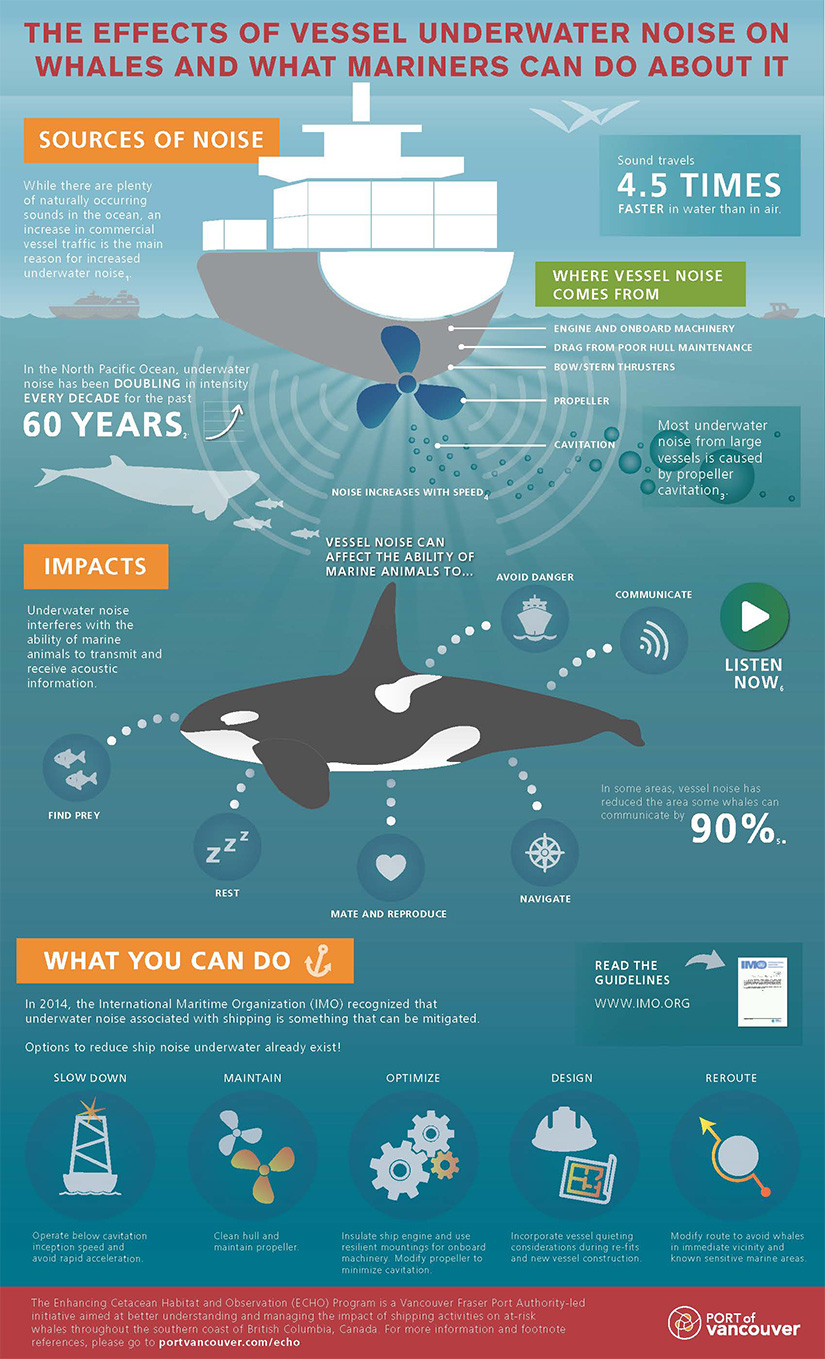Introduction
The Vancouver Fraser Port Authority (VFPA) established the Enhancing Cetacean Habitat and Observation (ECHO) Program to develop a better understanding of the impact of shipping activities on at-risk whales. A focus of the program is the Southern Resident Killer Whales (SRKW) that are listed as endangered under Canada’s Species at Risk Act. Research indicates that underwater noise from vessels interferes with the SRKWs’ ability to hunt for salmon and affects the whales’ ability to navigate and communicate.
VFPA conducted a voluntary vessel slowdown trial (Trial) to 11 knots through the water in Haro Strait between August 7th and October 6th of 2017 to improve the understanding of the relationship between slower vessel speeds, underwater noise levels and the noise effects on SRKWs. The slowdown adds 30 to 60 minutes per vessel to the one-way sailing time.
VFPA retained Seaport Consultants Canada Inc. (Seaport) in association with Colledge Transportation Consulting Inc. (CTC) to estimate the financial impact of the slowdown on commercial shipping. In Phase 1 of the study, Seaport focussed on the direct cost impact of the trial on shipping. In Phase 1, CTC applied a Multiple Account Evaluation (MAE) framework to assess the economic, environmental and cultural analysis of the Trial.




